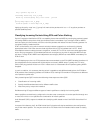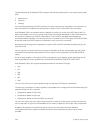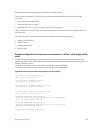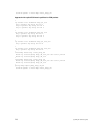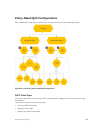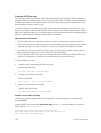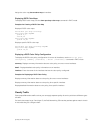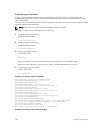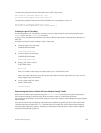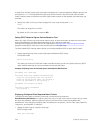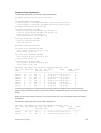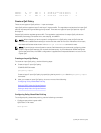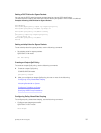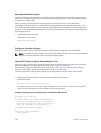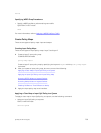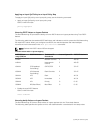
The following example matches IPv6 traffic with a DSCP value of 40.
Dell(conf)# class-map match-all test
Dell(conf-class-map)# match ipv6 dscp 40
The following example matches IPv4 and IPv6 traffic with a precedence value of 3.
Dell(conf)# class-map match-any test1
Dell(conf-class-map)#match ip-any precedence 3
Creating a Layer 2 Class Map
All class maps are Layer 3 by default; however, you can create a Layer 2 class map by specifying the
layer2 option with the class-map command.
A Layer 2 class map differentiates traffic according to 802.1p value and/or characteristics defined in a
MAC ACL.
Use Step 1 or Step 2 to start creating a Layer 2 class map.
1. Create a match-any class map.
CONFIGURATION mode
class-map match-any
2. Create a match-all class map.
CONFIGURATION mode
class-map match-all
3. Specify your match criteria.
CLASS MAP mode
match mac
After you create a class-map, the system places you in CLASS MAP mode.
Match-any class maps allow up to five access-lists. Match-all class-maps allow only one. You can
match against only one VLAN ID.
4. Link the class-map to a queue.
POLICY MAP mode
service-queue
Determining the Order in Which ACLs are Used to Classify Traffic
When you link class-maps to queues using the service-queue command, the system matches the
class-maps according to queue priority (queue numbers closer to 0 have lower priorities).
For example, as described in the previous example, class-map cmap2 is matched against ingress packets
before
cmap1.
ACLs acl1 and acl2 have overlapping rules because the address range 20.1.1.0/24 is within 20.0.0.0/8.
Therefore (without the keyword order), packets within the range 20.1.1.0/24 match positive against
cmap1 and are buffered in queue 4, though you intended for these packets to match positive against
cmap2 and be buffered in queue 1.
Quality of Service (QoS)
733



